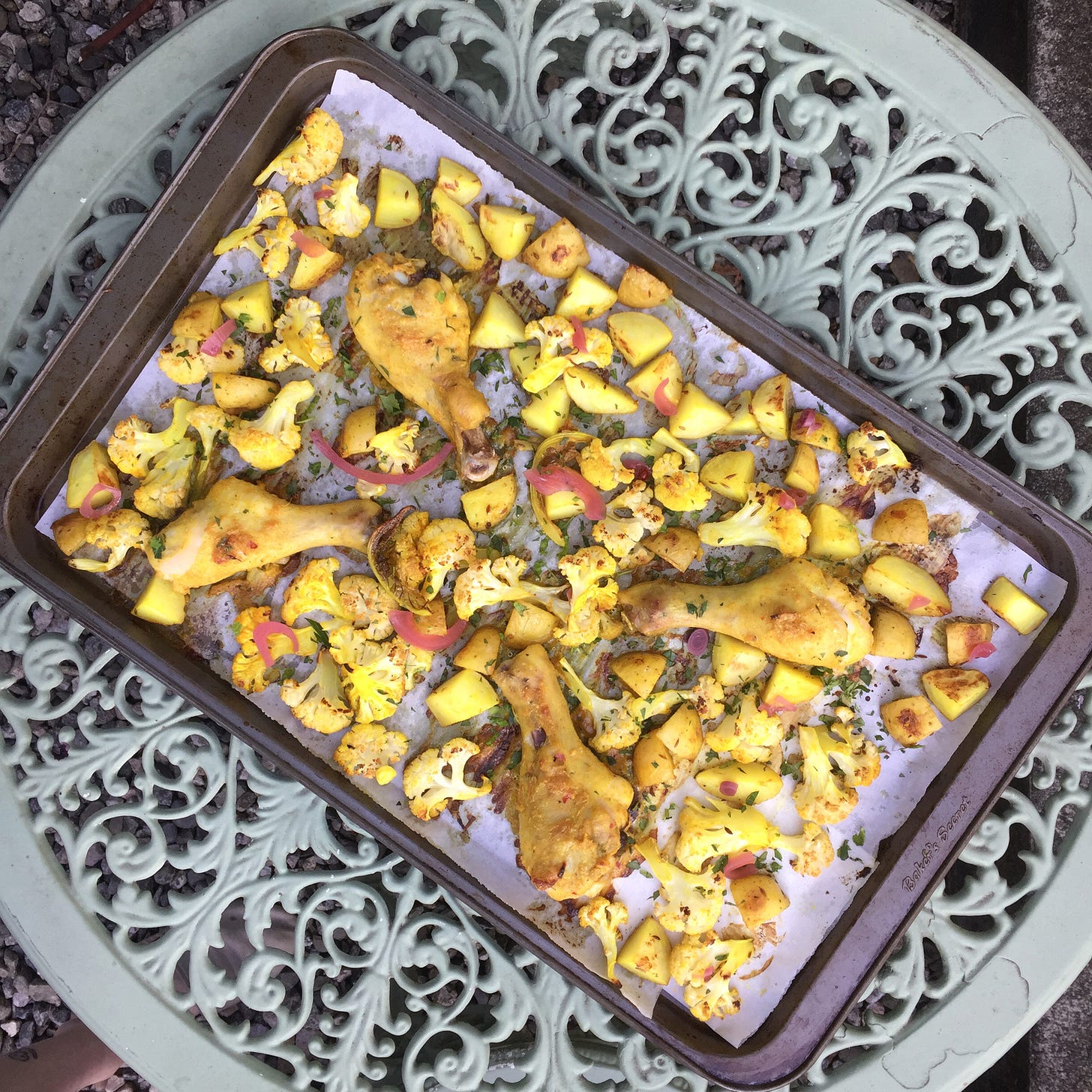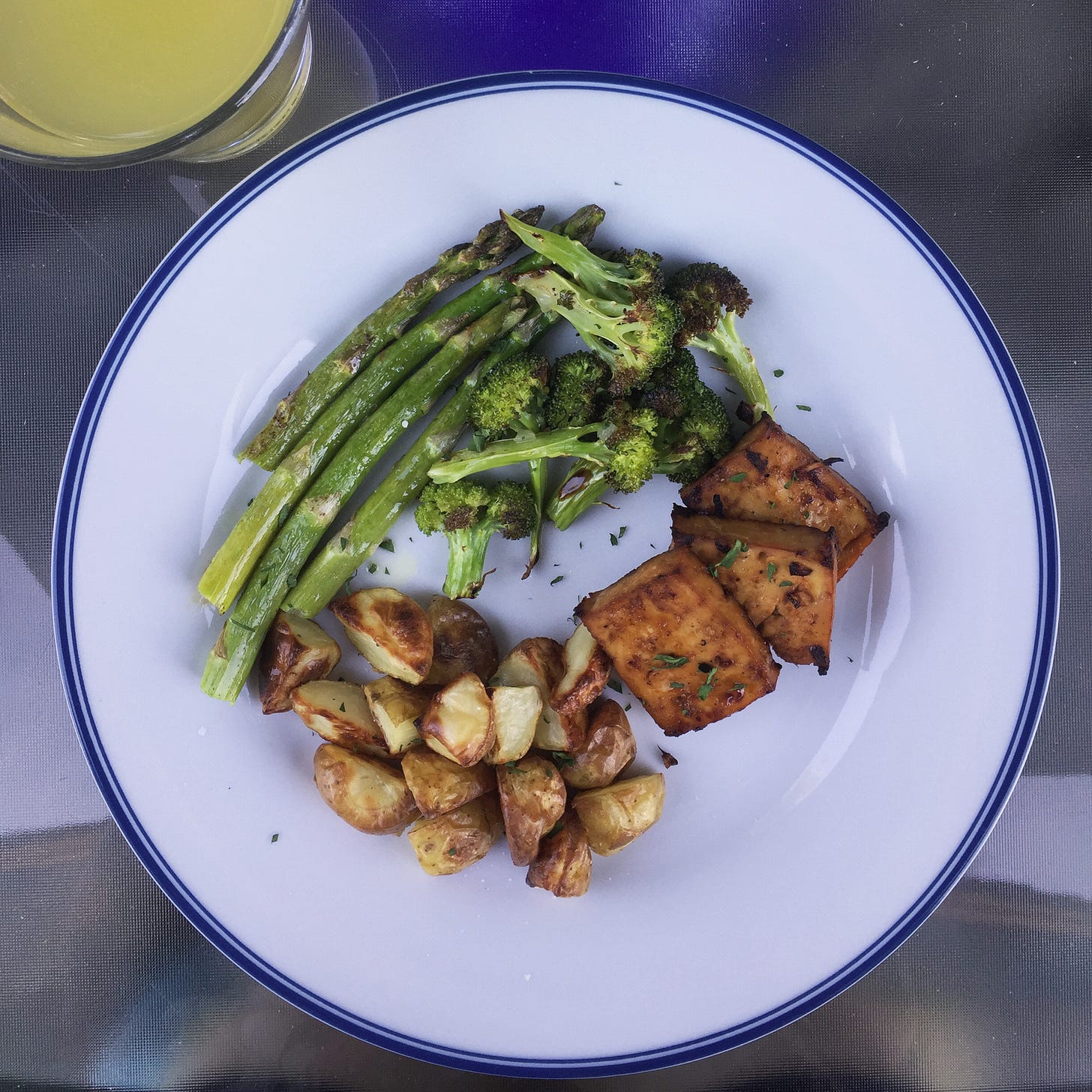Lately I’ve been really feeling really dulled by the repetitiveness of life in the midst of what seems like unending chaos. Time feels like it’s moving really quickly and I’m finding it hard to squeeze much joy out of my days. Most of what’s keeping me going is the thought of seeing my friends in a couple of weeks for the first vegan cookoff since February of 2020, and rearranging the furniture in my house (and buying new furniture on FB Marketplace) as we get used to our newfound extra space. I finally moved my desk setup out of the dining room and into the back office/guest room, and it’s incredible how much more spacious and put-together the room looks now. It feels so bougie to have room that is used solely as a “dining room” and I’ve always enjoyed having a kitchen table, but our current kitchen is 3 feet wide and can in no way accommodate one.
I gave my mind and body the gift this week of taking my bike out for a ride to Ambleside Beach, and I stopped for lunch at La Taqueria on the way. Have the tacos there gotten bigger? I swear I used to be able to eat four of them easily, and today I found myself struggling to finish three despite being pretty hungry. But their al pastor is simply otherworldly, and the enfrijolada close behind it in my taco power rankings. Also I saw a very small black cat which came over for pets while I was parking my bike, which made me feel like I was in a Ghibli movie or something— the taco shop is in a pretty industrial area, so it was unexpected to say the least.
I still have too many apples, so I went searching for something to bake them into that I haven’t already made a hundred times. I found this simple apple cake recipe from Melissa Clark, which, based on comments, seemed to be halfway between cake and blondies— sold. The method is fairly similar to the Chloe Coscarelli cake I made last week, but includes eggs and butter, and has no sliced apple pattern on the bottom, so it comes together just as quickly despite the bit of extra time spent creaming the butter and sugar. Also like the Italian apple cake, the batter is very thick, so it’s difficult to distribute the apple pieces evenly (I used my hands to spread them around in the baking dish).
When I took it out of the oven, I was worried it was overdone: the top looked cracked and was crisp enough that it made a sound when I tapped it. But after letting it cool and cutting into it, I found the top contrasted beautifully with the soft interior, the texture difference reminding me of the crust on a crème brûlée. The nutmeg in this feels a little intense for the height of summer, so I might sub it out for cardamom when I inevitably make it again with some of the apples from our tree. Overall it was as advertised— not quite chewy like a brownie, but not quite as airy as a cake— somewhere in the middle, delicious with or without a scoop of ice cream. The crispy crust will be gone by day 3 though, so eat it quick!
There are some vegetables I never worry about what I’ll do with. Tomatoes? No problem. Asparagus? Sure. But there are others that, for whatever reason, send me into a frenzy, looking in the index of every cookbook I own and browsing recipe collections on my favourite food sites, trying to find something to make that isn’t one of the same four things I always make with that vegetable. So receiving both cauliflower and broccoli in my produce bin this week felt like a lot to deal with. Thankfully, before resigning myself to making pasta two days in a row again, I remembered aloo gobi exists. And because I’ve been trying to use up some forgotten freezer treasures (or, potentially, trash), I decided to thaw some drumsticks to try Smitten Kitchen’s sheet pan chicken tikka, adapted from Meera Sodha’s recipe in Made in India.
Sheet pan recipes are great because not only do you get the delicious flavour from the meat incorporated into the vegetables, you also get to essentially eat two dishes while only having to make one. I used coconut yogurt in the marinade, and added a squeeze of lime juice to make it more acidic, since even plain coconut yogurt can be on the sweet side. I spooned a little more marinade over the chicken before baking— just enough for some extra flavour, not so much that it would spread and prevent the potatoes from browning— and I also tossed the vegetables in a bit of turmeric along with the olive oil and salt. My concern was that the vegetables would cook faster than the chicken, but after the initial 30 minute cooking time, it was the potatoes that needed more time; the meat was fully done.
The marinade (I marinated for 1 hour) was tangy and flavourful, and after cooking turned out just lightly spicy despite using both cayenne and hot paprika because the yogurt balances a lot of the heat. Roasting is definitely my preferred way of making aloo gobi since trying Priya Krishna’s method in Indian-ish, and this went really nicely with the chicken. I used the last of my pickled red onion to serve, like in the recipe, but I bet adding sliced onion to the pan halfway through the cook time would also be delicious. I also think you could make a decent veggie version of this meal by tossing chickpeas in the marinade and roasting them on a separate pan from the aloo gobi, or using the marinade on large cubes of tofu instead. I still have half the cauliflower left though, so I might have to make pasta with it after all.
Speaking of tofu, I made one of my three preferred tofu marinades this week to eat with the remaining new potatoes as well as some roasted asparagus and broccoli: orange ginger. It’s made with orange juice, lime juice, ginger, garlic, gochujang, and soy sauce, and it is so full of umami and just the right amount of heat. Why am I using my oven so much when it’s this hot? Only the gods can know.
Also this week I rediscovered the joy of shandy, the beer lemonade. I used half pilsner and half raspberry lemonade and it was extremely tasty and refreshing: the crispness of a beer without too much alcohol, plus the tart sweetness of a lemonade without too much sugar. People often use ‘radler’ and ‘shandy’ almost interchangeably, and I’m not sure which one it is that can only be made with lemonade or lemon soda and which one can use any soda or juice, but I’m also I’m a big fan of mixing beer with Italian sodas. If that sounds good to you, I recommend a west coast-style pale ale with blood orange or grapefruit flavour.
Media:
I liked this piece by Marian Bull for Eater, discussing aspects of cooking related to Sam Sifton’s new cookbook, No-Recipe Recipes, and how his claims that this is a “new, improvisational way” to cook are erasing a world of kitchen history. The author discusses the way many recipes historically and within non-white cultures have a certain level of assumed knowledge, with limited instruction and often without exact quantities— much like Sifton’s book. The style of recipes being given with precise instructions and measurements is largely a (relatively) recent phenomenon, coinciding with the mid-20th century when middle-class families began to no longer have hired help, and women then finding themselves at a complete loss for what to do in the kitchen.
Like how techbros accidentally “invent” something every 2 years that is basically just public transit, Sifton’s scope of knowledge is such that to him, encouraging people to cook with loose instructions and without exacting lists of ingredients is a new idea. Not that his book is necessarily without value: indeed, recipe writers should aim to give readers the confidence to improvise in the kitchen. But his disconnect from the way other cultures (and even Anglos, historically) approach cooking affords him a certain level of creative privilege available to white writers and the “global pantry” (see also: Alison Roman).
The piece goes deep into many aspects of recipe writing, including the narrative voice, who is the expected reader, and what it actually takes to teach intuitive cooking. The author notes that
“Outlining an improvisation is not the same as teaching someone to improvise on their own.”
With this in mind, perhaps then the main group of people who might benefit from Sifton’s book are those who already know how to improvise in their cooking, and in that case, would they really need a book of him telling them what to make? She argues that actually teaching improvisational techniques is a more in-depth process, one expertly taken on by Samin Nosrat in Salt, Fat, Acid, Heat, where the recipes don’t begin until more than 200 pages into the book: that is, once you know what to do with them.
Thanks for reading— if you enjoyed this newsletter, please share it with someone new! I like providing this to you for free, but it does still involve time and effort, so donations I can use towards cookbooks or future treats are much appreciated. Finally, please enjoy this list of what hyper-specific Japanese snacks to pair with which summer Olympic events.








